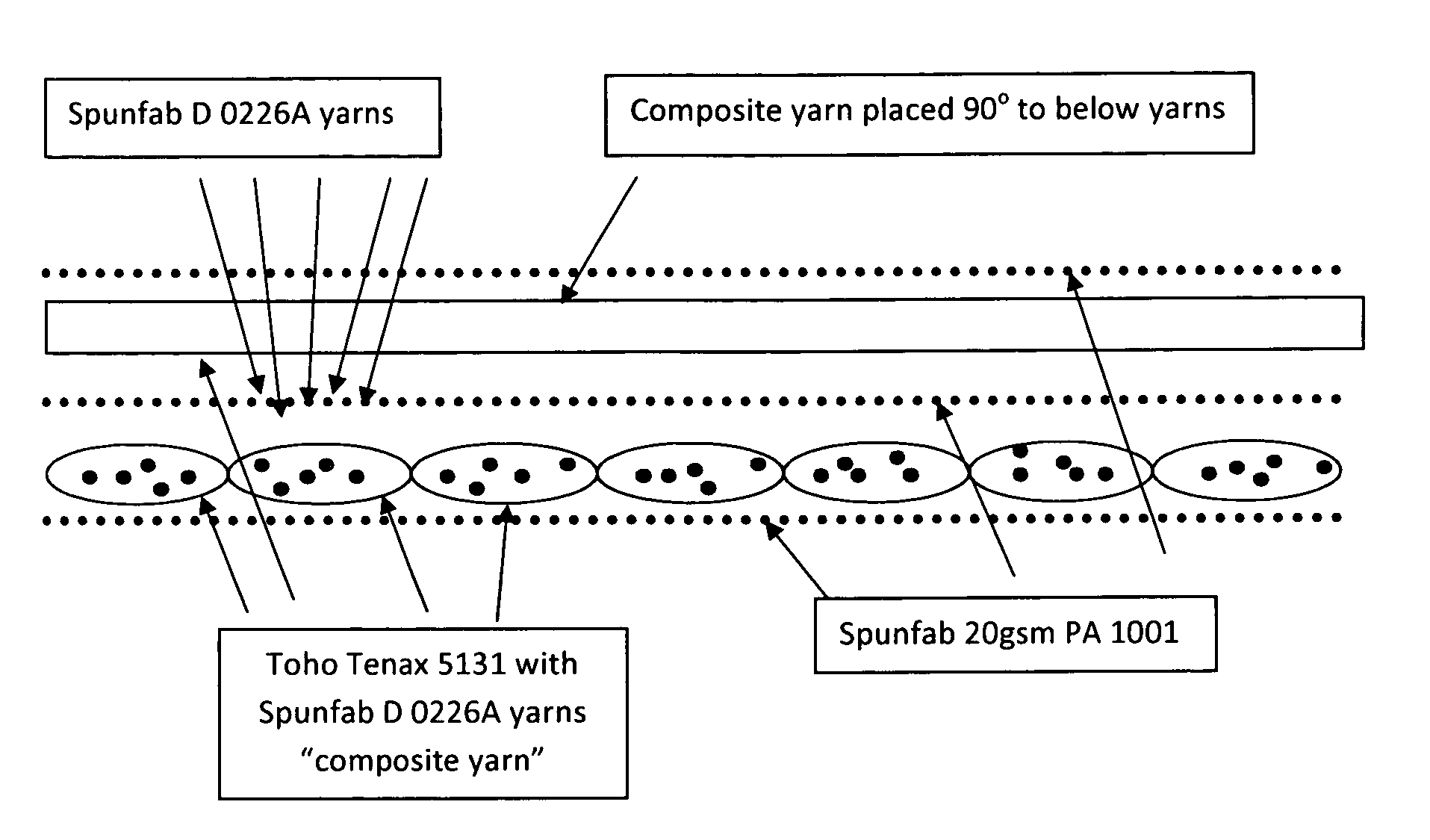Method of delivering a thermoplastic and/or crosslinking resin to a composite laminate structure
a technology of thermoplastic and crosslinking resin, which is applied in the direction of packaging foodstuffs, packaged goods types, other domestic articles, etc., can solve the problems of low fiber volume and concomitantly higher than desired finished thickness per ply, ply is thicker than desired, and resin lacking fiber reinforcement has poor strength
- Summary
- Abstract
- Description
- Claims
- Application Information
AI Technical Summary
Benefits of technology
Problems solved by technology
Method used
Image
Examples
example
[0046]A spool of Toho TENAX carbon yarn type HTA-5131 (available from Toho Tenax America, Inc.) at 200 tex is unspooled and plied with 3 spools of Spunfab D 0226A thermoplastic yarn (available from Spunfab Ltd.) at 50 denier per spool. The resultant yarns will hereafter he referred to as “composite yarn”. The composite yarn is then wound onto a final spool.
[0047]The a first layer of the resultant composite yarn is laid uniaxially parallel on top of a first layer of Spunfab 20 gsm PA 1001 non-woven web (available from Spunfab Ltd.). A second layer of 20 gsm Spunfab PA 1001 non-woven web is then placed on top of the first layer of composite yarn. A second layer of uniaxially laid parallel composite yarn is then placed at 90° to the first layer of composite yarn. Then a third layer of 20 gsm Spunfab PA 1001 non-woven web is placed on top of the second layer of composite yarn.
[0048]Release paper is placed on the top and bottom of the above sandwiched composite layers and the sandwiched ...
PUM
| Property | Measurement | Unit |
|---|---|---|
| Percent by mass | aaaaa | aaaaa |
| Percent by mass | aaaaa | aaaaa |
| Fraction | aaaaa | aaaaa |
Abstract
Description
Claims
Application Information
 Login to View More
Login to View More - R&D
- Intellectual Property
- Life Sciences
- Materials
- Tech Scout
- Unparalleled Data Quality
- Higher Quality Content
- 60% Fewer Hallucinations
Browse by: Latest US Patents, China's latest patents, Technical Efficacy Thesaurus, Application Domain, Technology Topic, Popular Technical Reports.
© 2025 PatSnap. All rights reserved.Legal|Privacy policy|Modern Slavery Act Transparency Statement|Sitemap|About US| Contact US: help@patsnap.com


